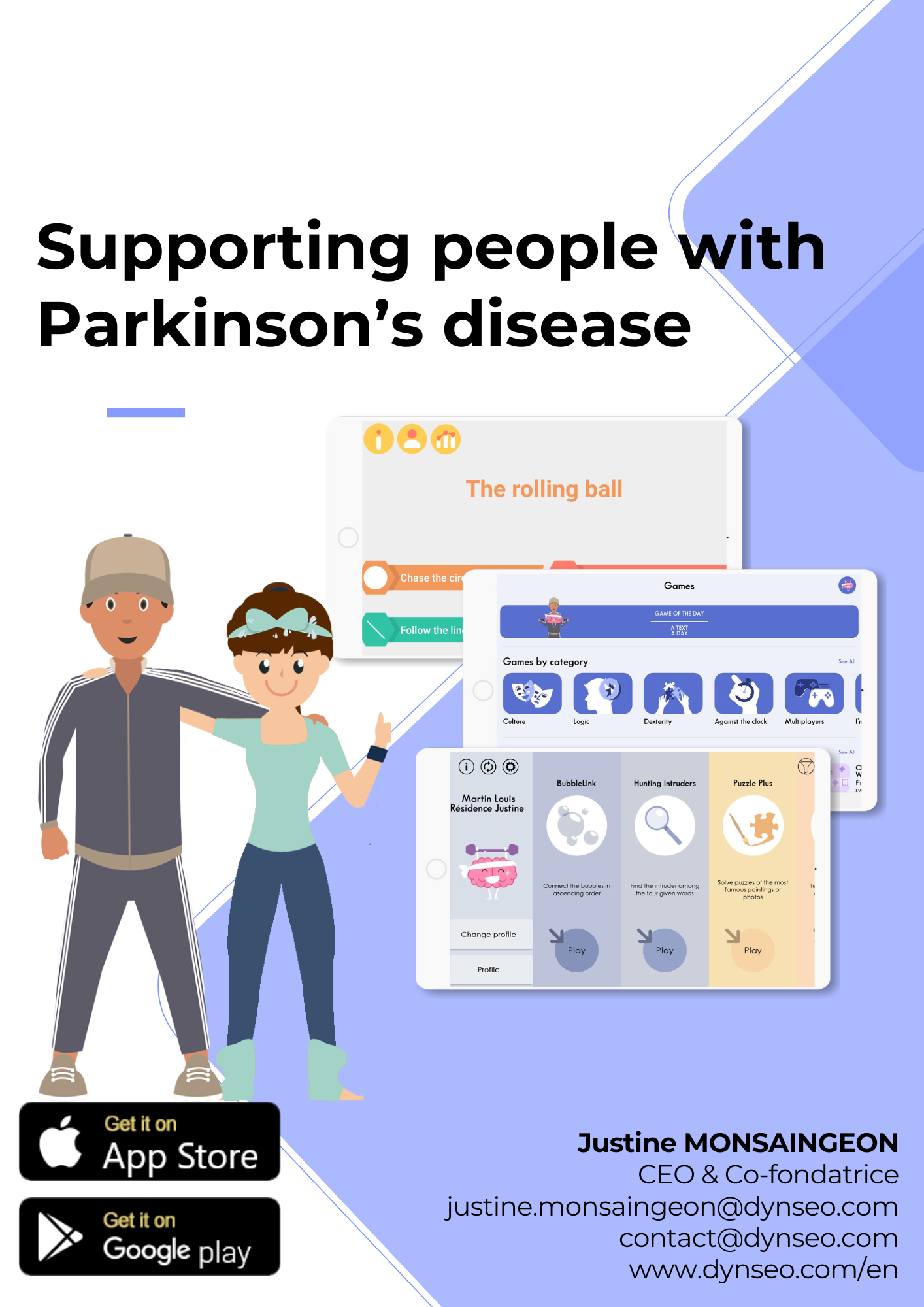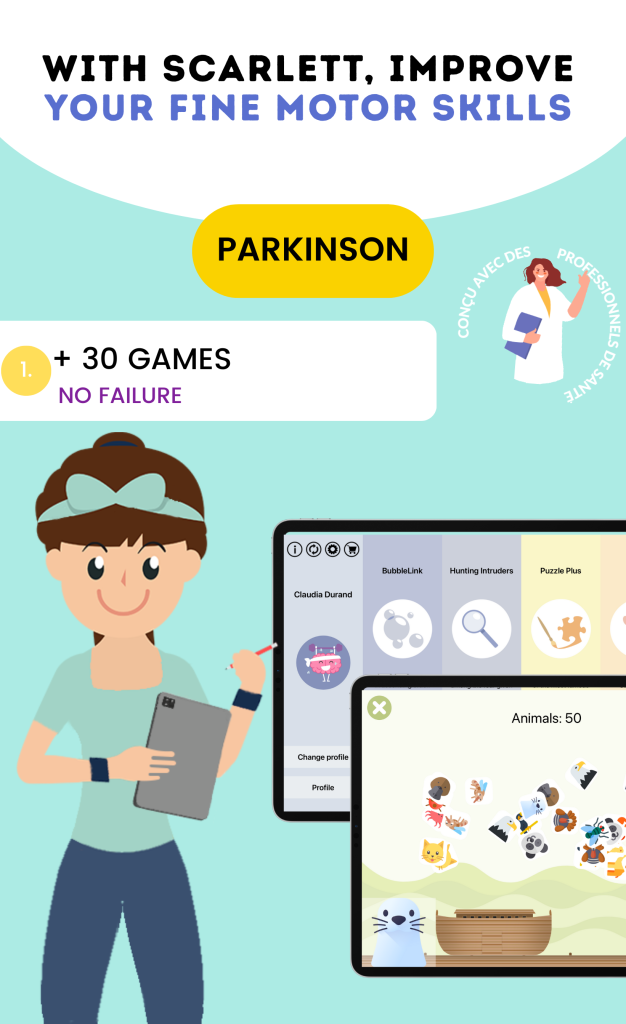The disease of Parkinson’s is a neurodegenerative condition that affects millions of people around the world. It manifests through various symptoms, such as tremors, muscle stiffness, and balance disorders. These manifestations can have a significant impact on the daily lives of those affected, particularly on their professional lives.
Indeed, the disease can make certain work tasks more difficult, thus affecting productivity and well-being at work. In this article, we will explore the different aspects of Parkinson’s disease in relation to the professional world, focusing on the challenges faced and possible solutions. We are convinced that raising awareness about this disease is essential to foster a better understanding and increased support for those affected.
By addressing the effects of the disease on professional life, we hope to encourage an open dialogue between employees, employers, and colleagues. This will not only improve working conditions for those living with the disease but also create an inclusive and supportive environment. Our guide to supporting people with Parkinson’s https://www.dynseo.com/accompagner-personnes-vivant-avec-parkinson/
The First Signs of the Disease and Their Impact on Work
The first signs of Parkinson’s disease can be subtle and often overlooked. Symptoms such as mild tremors, increased fatigue, or difficulties concentrating may go unnoticed at first. However, these manifestations can quickly evolve and have a direct impact on work performance.
For example, a person may begin to experience difficulties writing or using tools, which can affect their ability to complete daily tasks. It is crucial to recognize these early signs in order to act quickly. Indeed, an early diagnosis can allow for the initiation of appropriate treatments and consideration of adjustments within the professional environment.
We must encourage those affected to speak openly about their symptoms with their employer and colleagues, in order to find solutions together to mitigate the impact of the disease on their work.
Rights and Assistance for People with Parkinson’s Disease at Work

People with Parkinson’s disease benefit from certain rights and assistance that can support them in their professional lives. In France, the law guarantees disabled workers access to reasonable accommodations to allow them to perform their job under good conditions. This includes adaptations of the workstation, flexible hours, or specific training to better manage symptoms related to the disease.
Moreover, there are financial aid schemes for employers who wish to adapt the workstation of an employee with Parkinson’s. These aids can take the form of grants or tax exemptions, thus encouraging companies to invest in the inclusion of people with disabilities. We must ensure that these rights are well known and accessible to those concerned, so that they can benefit from the support they need to continue working.
The Importance of Communication with Employers and Colleagues
Communication is a key element in fostering an inclusive and understanding work environment for people with Parkinson’s disease. It is essential that employees feel comfortable discussing their condition with their employer and colleagues. Open communication not only informs others about the challenges faced but also establishes a climate of trust and solidarity within the team.
We encourage people with Parkinson’s to share their experiences and needs with their colleagues. This may include discussions about necessary adjustments to facilitate their work or the strategies they use to manage their symptoms. By fostering constructive dialogue, we can help create an environment where everyone feels supported and understood.
Possible Adjustments to Facilitate Employment Retention
There are several adjustments that can be made to help people with Parkinson’s disease maintain their employment. Among these adjustments are the adaptation of the workstation, such as the use of ergonomic tools or specific equipment to facilitate certain tasks. For example, assistive devices can be installed to help with object manipulation or writing.
Additionally, it is possible to consider flexible hours or remote work to allow employees to better manage their fatigue and symptoms. These adjustments can contribute to improving the quality of life at work and maintaining satisfactory productivity. We must encourage employers to be proactive in implementing these adjustments to ensure a work environment that meets the needs of people with Parkinson’s.
Managing Stress and Fatigue Related to the Disease at Work

Managing stress and fatigue is crucial for people with Parkinson’s disease, especially in a professional context. Stress can exacerbate symptoms and make work even more difficult. Therefore, it is important to adopt strategies to reduce stress at work, such as regularly practicing relaxing activities or using suitable applications.
We have developed applications such as La Bille Roule, which helps work on fine motor skills while offering a playful and engaging approach. Additionally, our Edith & Joe program offers adapted exercises for the brain, used by patients with Parkinson’s in collaboration with their speech therapists. These tools can help manage stress and improve overall well-being at work.
The Importance of Physical Activity and Professional Rehabilitation
Physical activity plays a vital role in managing the symptoms of Parkinson’s disease. It not only helps improve overall physical condition but also reduces work-related stress and anxiety. Tailored exercise programs can be integrated into employees’ daily routines to encourage better physical and mental health.
Professional rehabilitation is also an important aspect to help people with Parkinson’s adapt to their work environment. This may include specific training to develop skills suited to the new realities associated with the disease.
Professions and Sectors Suitable for People with Parkinson’s Disease
Some professions and sectors may be more suitable for people with Parkinson’s disease due to lower physical or cognitive demands. For example, jobs in administrative fields, consulting, or remote work can offer flexibility that allows employees to better manage their symptoms. It is important for those affected to explore different professional options that match their skills and specific needs.
We must also encourage employers to consider hiring people with Parkinson’s by highlighting their unique skills and experience.
Testimonials from People with Parkinson’s Disease Who Continue to Work
Testimonials from people with Parkinson’s disease who continue to work are a valuable source of inspiration.
Many share their strategies for managing their symptoms on a daily basis, as well as the importance of family and professional support.
These stories also testify to the resilient power of individuals in the face of adversity. By sharing these experiences, we can encourage others affected by the disease not to abandon their professional aspirations and to seek suitable solutions to continue working.
Resources and Associations to Support People with Parkinson’s Disease in Their Professional Lives
There are several resources and associations that offer support to people with Parkinson’s disease in their professional lives. These organizations provide information on workplace rights, practical advice on workstation adaptation, and psychological support programs. We must encourage those affected to reach out to these resources to obtain the support they need.
Moreover, these associations play a crucial role in raising public awareness about the disease and its impacts on the world of work.
Conclusion: The Importance of Finding a Balance Between Professional and Personal Life Despite Parkinson’s Disease
In conclusion, it is essential for people with Parkinson’s disease to find a balance between their professional and personal lives. Although this disease can present significant challenges, there are solutions and resources available to help everyone thrive in their professional environment. We must continue to promote a culture of inclusion and support within companies so that everyone can work in a setting adapted to their needs.
Through open communication, appropriate adjustments, and collective commitment, it is possible to significantly improve the quality of life at work for those living with this disease.
In the article “Parkinson and Professional Life: How to Continue Working Despite the Disease?”, it is essential to consider innovative approaches to support people with Parkinson’s disease in their work environment. One method that could be beneficial is the Montessori method, which is often used to stimulate cognitive abilities and improve the quality of life for individuals with neurological disorders. To learn more about this approach, you can consult the article The Montessori Method for Dummies, which explains how this method can be adapted to help adults maintain their cognitive skills and remain professionally active.




